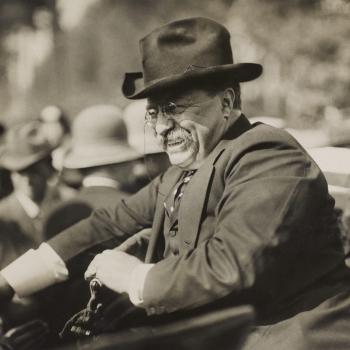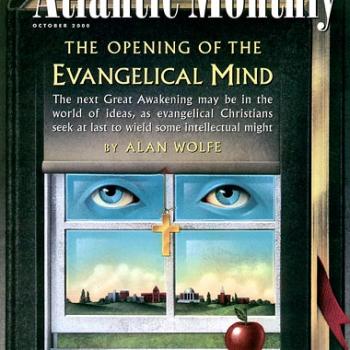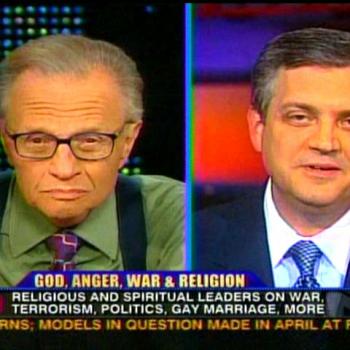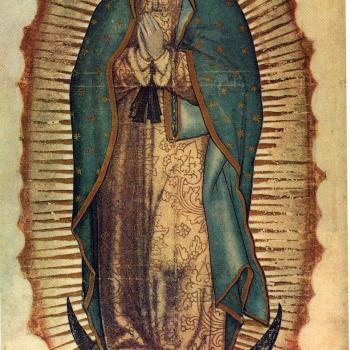If you follow discussions among Roman Catholics you may know that ever since Vatican II the church has had some trouble deciding whether that council modernized the church or simply restated old truths in newer and pastorally sensitive ways. This debate revolves around the so-called hermeneutic of continuity that Pope Benedict XVI asserted in order, precisely, to try to clarify the relationship of the post-conciliar church to the pre-conciliar version. On the other side have been those associated derogatorily with a hermeneutic of rupture that sees the church overcoming its medieval past and throwing in with modern norms, ideas, and sensibilities.
The problem of continuity — or how to read the past — is no less troubling for Roman Catholic integralists. These are church members who are so provoked by the woes of liberal society (who can blame them?) that they are looking to older notions of politics that the church previously taught. Here is a brief description of integralism from a quotation in a previous post:
…they wish to work towards something like High Medieval Christendom. In that arrangement, as Andrew Willard Jones has shown in his masterful book Before Church and State, it makes no sense to distinguish Church and state as separate spheres at all; rather there was one single kingdom in which spiritual and temporal authorities cooperated. Thinkers who promote such an integration do not necessarily want to emulate the Middle Ages in other respects….But the crucial point is that integralists want an ordered relation of temporal and spiritual power in the deliberate pursuit of the good for human beings.
Notice now how defenders of integralism are at pains to identify which part of the church’s history they believe had church/state relations right. P.J. Smith of Semiduplex is especially representative of the challenge. To the charge that integralism is fundamentally anti-liberal and a resurrection of the sort of conservatism that fueled anti-Catholicism in the United States, Smith points to European Christian democracy as the ideal:
the only way liberalism is going to make a comeback among Catholic thinkers is by abandoning the tedious connection with American conservative politics. Instead, it is necessary to argue for the sort of postwar Christian democracy that formed the core of the European project. To be sure, it went wrong like American liberalism…. Nevertheless, it is in the Christian-democratic project that liberalism’s best hope lays.
[Christian Democratic parties are generally foreign to most American Christians and here is one handy summary for the uninitiated:
The Christian democratic phenomenon can be broadly thought to rest on two pillars: a heightened capacity of Christian democratic parties to accommodate heterogeneous groups and sectors, which gave rise to an early and pronounced “catch-all” profile; and a creative ability to both retain and tone down their religious identity, which was an essential feature in their formation. … The ensuing conflicts gave rise to intensely accommodationist and consociational practices that were necessary for ensuring the parties’ unity and cohesion. Mediation between these divergent and increasingly assertive interest groups was imperative. As a result, Christian democratic parties have displayed extreme skill in deploying and managing the politics of mediation, which their opponents have derided as opportunism and a belief “that the ends justify the means.” The principle of subsidiarity (higher authorities, such as the state, should intervene only where individuals or smaller communities are not competent), which is central in the process of European integration, can also be traced back to these developments. Last, the ability to accommodate divergent class interests within the party produced a heightened capacity to successfully appeal across classes and sectors.]
That does not sound too bad. But wait, Smith has more, such as when he asserts that the social teaching of the church, formally begun by Leo XIII, is in the integralists’ sweet spot:
We should be clear at the outset that we are aware, though perhaps we should be more aware, that “integralist Catholic” is—or ought to be—a redundancy. Integralism is simply the perennial teaching of the Church, finding its finest expression in Leo XIII’s encyclicals, regarding the relationship of the Church to the state.
Why it took until the 1890s for the church Jesus founded in 33 AD to deliver the right formulation is a question Smith does not ask. It goes without saying he does not answer it. Either way, Smith has shifted (in two separate posts) from the 1950s back to the 1890s. But he is not finished. And like all good integralists, medieval Christendom is where we see the best relationship between church and state:
Indeed, at the height of Christendom… the civil authority and all its unpleasant coercion was seen as explicitly Christological. Pater Waldstein cites Ernst Kantorowicz’s monumental volume, The King’s Two Bodies, to make this point. The medieval understanding of kingship was explicitly Christological. … instead of reeling off the usual list of putative crimes of Christendom, [critics should engage] thoroughly with the medieval understanding of kingship. It is pretty clear that no one from St. Peter and St. Paul to St. Augustine to St. Benedict to St. Thomas Aquinas saw any contradiction between coercive power and Christological authority.
So there you go with the integralists’ fun ride through church history, with stops in post-World War II Europe, fin de siecle Europe, and finally medieval Europe. (In case you didn’t notice, that is a lot of Europe and the apologists for the United States might well detect a sense of European superiority among integralists.) But it is hardly a hermeneutic of continuity since any historian knows that Europe in 1300 is a very different place from Europe in 1900 compared to the Europe of 1955.
Nevertheless, when you insist, as Cardinal Raymond Leo Burke did recently, that:
At a time of profoundest spiritual and moral crisis, the Catholic Church needs more than ever before to recall her sacred tradition, unbroken from the time of the apostles
you might see continuity where others, with less skin in the game, see change.












